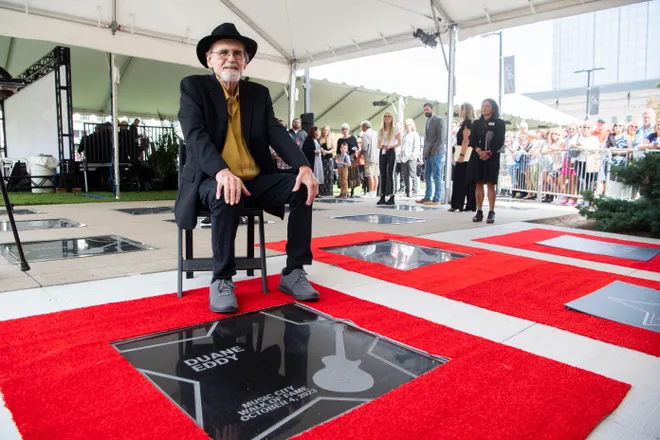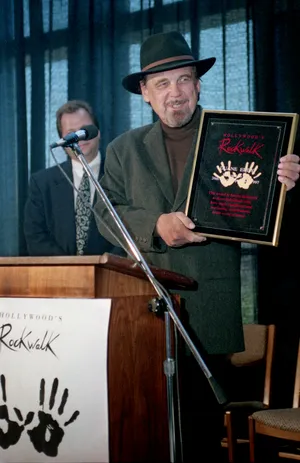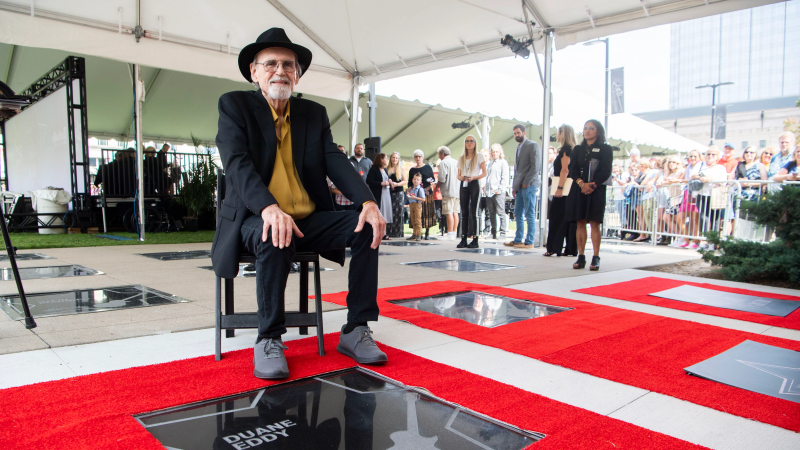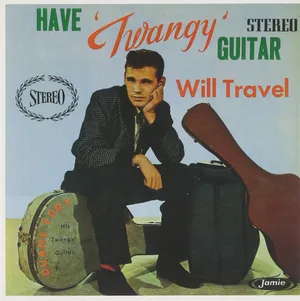Duane Eddy, 'the first rock 'n' roll guitar god', dies at 86

Duane Eddy, the most commercially successful instrumental artist in the history of rock 'n' roll, has died. He was 86.
The Grammy-winning guitarist died peacefully on Tuesday, surrounded by family in Franklin, Tennessee.
He was inducted into the Rock and Roll Hall of Fame in 1994 on the strength of a career he launched in 1958 with the million-selling instrumental “Rebel Rouser.”
Born in Corning, New York, and raised in New York State, Eddy moved to Tucson then to Coolidge, Arizona, with his family as a teenager. It was while living in Coolidge that he collaborated with a DJ named Lee Hazlewood, who cut the young guitarist’s instrumental breakthrough, “Rebel Rouser,” in a Phoenix studio called Audio Recorders.
“Rebel Rouser” was the third song he and Hazlewood recorded.
How Duane Eddy and Lee Hazlewood made 'Rebel Rouser'
The first was “Soda Fountain Girl,” recorded with a friend named Jimmy Delbridge and released in 1955 as a duet by Jimmy and Duane.
In an interview with blogger Simon Nott in 2013, Eddy said of “Soda Fountain Girl,” “The first record Lee Hazlewood produced with Jimmy Dell and myself, we sang together when we were 16/17."
By 1957, Eddy was renting a room from Hazlewood in Phoenix and had purchased his signature hollow-body Gretsch "Chet Atkins" model when a twangy instrumental titled "Raunchy" hit the Top 5 in two versions at the same time — one by Bill Justis, the other by Ernie Freeman.
As Eddy told The Arizona Republic, part of the USA TODAY network, in 2020, "When 'Raunchy' hit, Lee said, 'You need to go home and write something. We need to cut an instrumental.'"
Hazlewood had recorded "everybody that could hum a tune by then," Eddy recalled.

"He'd take them in the studio and send the record off to different independent labels in LA to try and get a deal," Eddy said. "I just wanted to play. And he said 'Write an instrumental' so I did."
The next Hazlewood session resulted in “Movin’ ’N’ Groovin’,” a less-than-subtle instrumental rewrite of Chuck Berry’s “Brown Eyed Handsome Man.” It failed to set the charts on fire, stalling at No. 72 in early 1958.
"That was enough to encourage the company back east to say, 'Go do some more,'" Eddy told The Arizona Republic. "So we went in, in March of '58, and cut 'Rebel-Rouser.' The rest is history, so to speak."
“Rebel Rouser” was a different matter altogether. Boasting one of early rock 'and'n' roll’s essential riffs, a haunting low-end melody swimming in echo, it peaked at No. 6 in 1958, and Eddy followed through with two more Top 10 singles, “Forty Miles of Bad Road” (No. 9) and “Because They’re Young” (No. 4) by 1960.
Eddy went Top 40 15 times on Billboard’s Hot 100 and sold more than 100 million records worldwide.

'The first rock 'n' roll guitar god'
Released in 1958, his debut album, “Have ‘Twangy’ Guitar Will Travel,” peaked at No. 5 and spent 82 weeks on the charts. Among his more well-known recordings is the theme to “Peter Gunn,” which peaked at No. 27 on the U.S. charts in 1960 but did better in the U.K., where it peaked at No. 6.
The Rock & Roll Hall of Fame website quotes John Fogerty of Creedence Clearwater Revival calling Eddy “the first rock and roll guitar god." The Hall of Fame goes on to note the influence of Eddy’s trademark twang in everything from “Born to Run” to the Beatles (dig the twangy low-end riffing on “I Want to Hold Your Hand”).

Duane Eddy's legacy
Although the hits dried up for Eddy after “Boss Guitar” hit No. 28 in 1963, he played guitar on Art of Noise’s version of the theme to “Peter Gunn,” a Top 10 U.K. hit in 1986. A year later, the legend’s first album in nearly a decade featured guest appearances by Fogerty, George Harrison, James Burton, Ry Cooder and Steve Cropper (of Booker T. & the M.G.’s), speaking to the lasting impact of those early records.
Published in 2004, “The Rolling Stone Album Guide” summed up the pioneering surf guitarist’s role in the early development of rock and roll.
“Twang is the word most closely associated with guitar legend Duane Eddy,” the entry began.
“And certainly that sound best summarizes his personality on record. But Eddy wasn’t all lower-register melodies, liberal tremolo and omnipresent whammy bar. His instrumentals were the original music-minus-one exercises — only the vocalist was missing. This emphasis on song construction separated Eddy from inspired ’50s primitives such as Link Wray and set a standard for the rock instrumental that flowered in the’60s when the Ventures came on the scene, and later with the advent of surf music.”
Eddy is survived by his his wife Deed, four children, five grandchildren and nine great grandchildren.
Disclaimer: The copyright of this article belongs to the original author. Reposting this article is solely for the purpose of information dissemination and does not constitute any investment advice. If there is any infringement, please contact us immediately. We will make corrections or deletions as necessary. Thank you.







